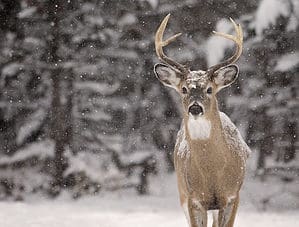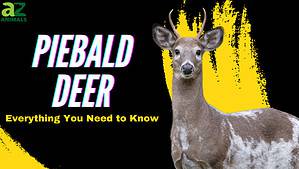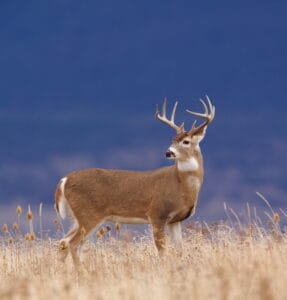There are so many controversies evolving around deer antler velvet nowadays! But what is antler velvet, and why is it so popular in traditional medicine?
We’ve done the research and found the answers. Read on to learn everything you need to know about antler velvet!
What Is Deer Antler Velvet?
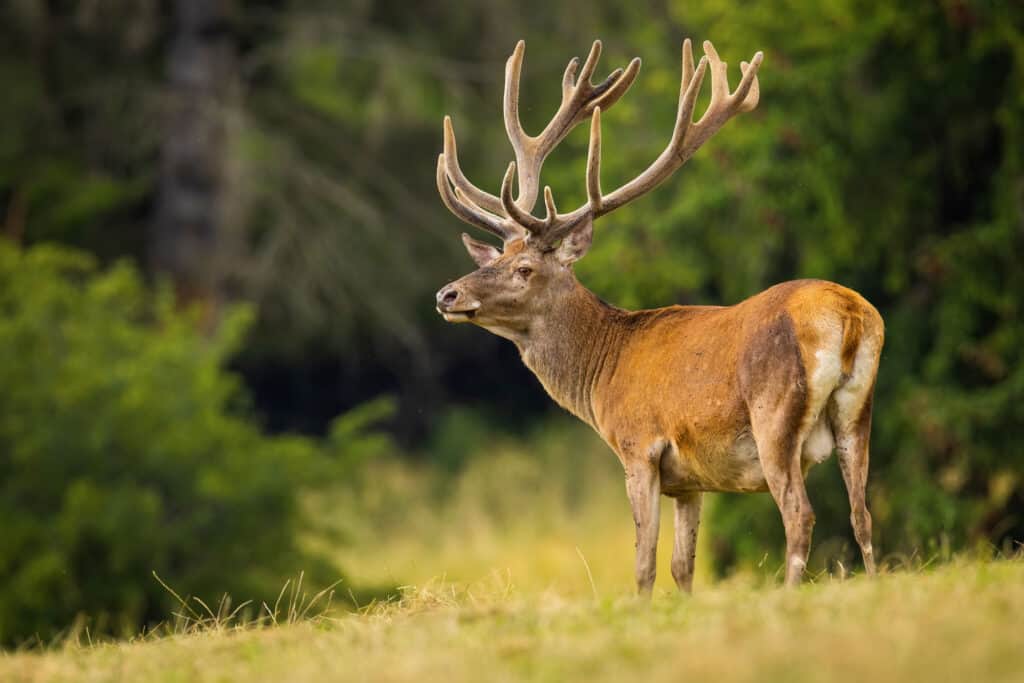
The term
velvetrefers to the hairy, velvet-like
antler
coverage.
©iStock.com/JMrocek
The term antler velvet is designated for the pre-calcified cartilaginous deer antlers. The term velvet refers to the hairy, velvet-like antler coverage. But first, let’s find out what deer antlers are.
Antlers are those bone-like structures on a deer’s head or, biologically speaking, the extensions of a deer’s skull. Females do not have antlers, and all males grow antlers that play a primary reproductive and social role. Female reindeer are the only ones in the Cervidae family with the physical ability to grow antlers, but they’re usually smaller and less branched than those of male deer.
Antlers grow from the pedicle – an attachment point on the deer’s skull. And here’s when the antler velvet term comes into discussion. While antlers grow, they’re covered in vascular skin, which we’ve previously discussed has a hairy, velvet-like appearance.
The velvet’s primary function is to supply the cartilage with oxygen and required nutrients. The antlers remain covered in velvet until the cartilage is replaced by bone structure and the antlers reach their maximum size.
Deer antler velvet consists of roughly 40 compounds and 400 active ingredients. It contains minerals and trace elements, amino acids, and glycosaminoglycans.
Human Uses For Deer Antler Velvet
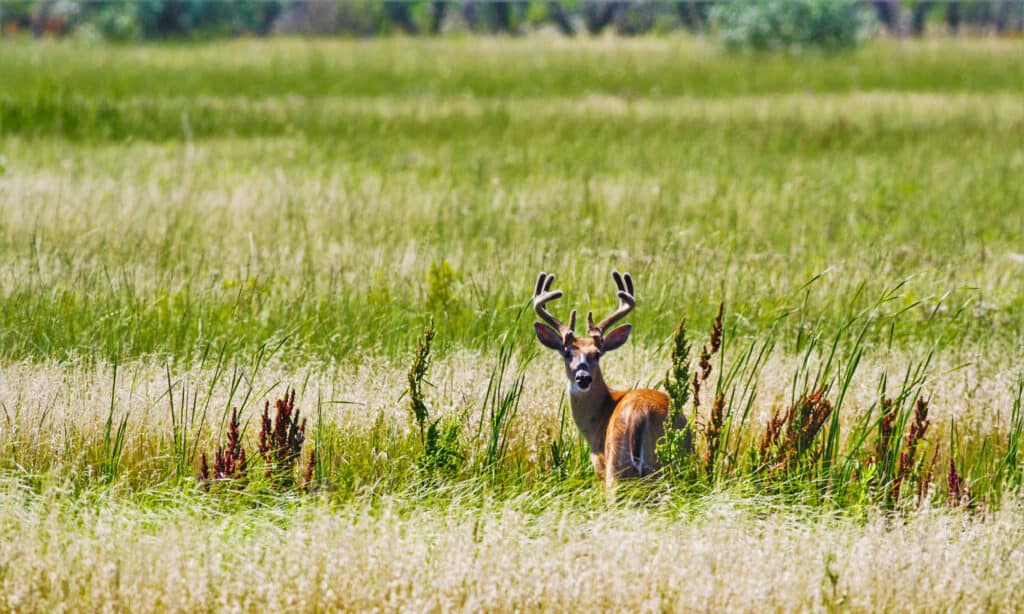
Antler velvet’s active ingredients are useful in increasing blood supply and circulation, balancing energy levels, and reducing inflammation.
©Kit Carlson/Shutterstock.com
We’ve already established that the velvet that covers deer antlers plays an essential role in antler growth and development. What if we told you that velvet uses go much beyond its purpose in the wild?
Antler velvet’s active ingredients are now useful in improving general health, increasing blood supply and circulation, balancing energy levels, and reducing inflammation. But is it completely safe to use? Keep reading to find out!
Antler velvet has been extensively used in traditional Chinese medicine for over 2,000 years for the purposes mentioned earlier. Furthermore, it is thought to cure yang deficiency syndromes, especially if it comes from sika deer or red deer.
On the Asian continent, antler velvet is sold as powder or antler slices. People use it as an ingredient in medicinal soups or boil it in water, mixing it with other herbs. Between the 1930s and 1980s, Russia used deer antler velvet to create an alcohol extract known as Pantocrin on the market.
Today, antler velvet is a popular dietary supplement in the United States. However, the Food and Drug Administration doesn’t recommend selling and consuming deer antler velvet products. The FDA has even sent warning letters to companies selling antler velvet supplements because there’s no scientific backup to indicate whether the product is useful and safe to ingest.
Drugs and supplements containing antler velvet should be considered new products in the United States, which means they cannot be sold if the FDA hasn’t approved them. However, the FDA allows selling antler velvet extract, powder, or spray, as long as the product label mentions that the organization hasn’t evaluated it.
Deer Antler Velvet Animal Uses
Although this field isn’t extensive, some studies focus on deer antler velvet benefits for other animals. For instance, a study called “Clinical evaluation of a powder of quality elk velvet antler for the treatment of osteoarthrosis in dogs” focuses on understanding whether antler velvet can impact the daily life activities of sick dogs. Thirty-eight dogs were observed – 13 received a placebo for 30 days and antler velvet for 60 days, while 25 received only antler velvet for 60 days.
The results and clinical signs were analyzed by an orthopedic surgeon who noticed that the 13 dogs’ behavior and vitality showed no improvement in the 30-day placebo treatment but registered significant improvement when given antler velvet. The same happened with those that received antler velvet only.
This indicates that antler velvet may be useful in alleviating osteoarthrosis in dogs. Who knows how useful it can be for other animals?!
Should You Use Antler Velvet?
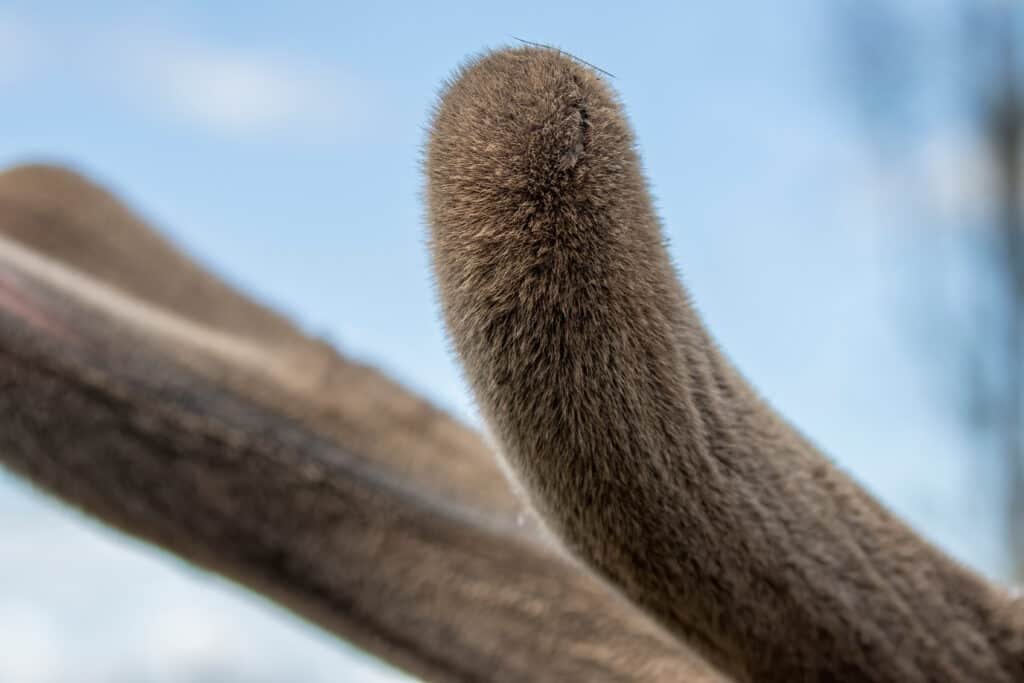
Adding antler velvet to your diet is completely up to you if this is legal in your country.
©Karel Bock/Shutterstock.com
Adding antler velvet to your diet is completely up to you if this is legal in your country. However, if you choose to try it, don’t forget that scientists aren’t 100% sure that antler velvet products are safe to use. Moreover, the side effects and contraindications aren’t fully known.
A study shows that antler velvet powder improves muscular performance in athletes. Still, there’s insufficient evidence to state this is indeed accurate.
Suppose you’re an athlete and decide to use antler velvet powder or spray. In that case, you should consider that the NCAA (the National Collegiate Athletic Association) warns against using these products because they may contain the IGF-1 ingredient, a banned substance.
In short, while deer antler velvet has been used for thousands of years in traditional medicine, there’s no sufficient evidence nowadays to indicate it can help with the problem you plan to use it for. Besides this, since deer antler velvet contains hormones, it may interact with other drugs, such as birth control pills or other drugs containing estrogen.
Therefore, before taking any supplements containing antler velvet, we strongly recommend checking whether it’s legal and whether your doctor finds it a good solution for your problem.
Deer Antlers Incredible Facts
If we’ve sparked your curiosity, keep reading to learn more incredible facts about deer antlers!
- Deer possess the fastest-growing bone among mammals – yes, we’re talking about antlers!
- Did you know that moose can use their antlers to hear better? Studies show that moose antlers increase their hearing capacity by 19%!
- We’ve already discovered that antler velvet is sought-after for its therapeutic purposes for humans and animals. On the other hand, fully-grown antlers are of utmost importance in the wild, as they serve as a food source for other animals like rabbits or squirrels.
- Some male deer do not have fully developed antlers, and they are called spike deer. However, scientists believe good nutrition and genetic potential may help them grow their antlers.
Up Next:
- What Do Deer Eat?
- The Best Deer Resistant Shrubs
- Why Do Female Reindeer Have Antlers?
- Reindeer Antlers: Everything You Need to Know
The photo featured at the top of this post is © iStock.com/Jeff Edwards
Sources
- Science Direct, Available here: https://www.sciencedirect.com/science/article/abs/pii/S0731708513003506
- National Library of Medicine, Available here: https://www.ncbi.nlm.nih.gov/pmc/articles/PMC548602/
- FDA, Available here: https://www.fda.gov/search?s=velvet+antler
- American Veterinary Medical Foundation, Available here: https://www.avma.org/resources-tools/literature-reviews/welfare-implications-deer-velvet
Thank you for reading! Have some feedback for us? Contact the AZ Animals editorial team.



